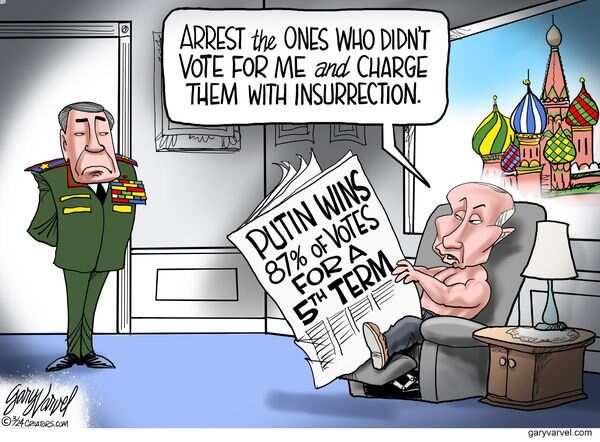
He stood in line for hours, clutching his ballot. It had been a brutal election cycle for voters, who watched as challengers to the favored candidate were jailed, slandered, threatened, and “disappeared.” Accurate information was impossible, and censorship ensured that only one narrative, that of the favored candidate, would be heard.
Rivals were carefully vetted to ensure they posed no significant threat to the incumbent, and those who offered a substantial challenge to the chosen candidate were quickly maligned, disqualified, or otherwise dispatched to ensure no true rival arose from the ashes of the incumbent’s version of “democracy.”
News outlets fawned over the favorite and slandered those who challenged him, and the election outcome was a foregone conclusion. In 2020, voting “day” was extended to three days, leaving officials ample time to manipulate the votes before reporting final tallies.
Our brave little voter still hopes his vote will sway the results, pinning his dreams of a fair election on voting machines he and his fellow voters have been assured would eliminate “fraud.”
Is it a prediction of November 2024 in America, a look back at prior American elections, or the reality faced by Russian voters on March 17, 2024?
Trick question – it’s all three.
As the sun rose over the Kremlin in Moscow on March 18, 2024, there was a familiar face resuming command of Russia. In an outcome that shocked no one, Vladimir Putin was again “voted” into power the day before. It was an unsurprising result for a candidate who has spent his twenty-year political career refining his election fraud tactics to ensure he stayed in power.
In 2011, the Russian government was accused of adding approximately 11% unauthorized votes to secure a victory for the dominant party in the parliamentary elections. By the 2018 presidential election, allegations of vote manipulation persisted, suggesting that millions of fraudulent votes were added, resulting in President Vladimir Putin’s re-election. The initial reported election results, which erroneously totaled 122%, were promptly amended, and the official outcome reported President Putin receiving 76.65% of the vote with 99% of ballots counted.
Experts warn that Putin may have gone a little overboard with fraud this year, resulting in many statistical improbabilities. Putin won with over 87% of the vote.
Around 22 million out of the 76.3 million votes supposedly in favor of President Putin are considered fake, almost a third of his reported total votes. An estimated 31 million votes for Putin are suspected to have resulted from ballot stuffing.
Putin’s victory was ensured through the widespread adoption of electronic voting machines used in 29 regions. Electronic voting leaves no tangible proof of an individual’s choice, enabling the possibility for any desired outcome to be fabricated. Meanwhile, the Central Election Committee (CEC) ceased video surveillance at polling stations, a practice established after the 2018 elections when footage frequently showed officials stuffing ballot boxes. During that election, the state-run CEC was forced to invalidate the results in 11 regions where the evidence of tampering was undeniable.
In some places, Russian citizens can still vote using paper and pen. However, a video shows that some pens given at voting places have special ink that disappears with heat. This means someone could erase the vote mark and change it to something else later.
For 2024, only results at odds with the fix are being reevaluated. One of Putin’s political opponents in the recent presidential election allegedly received ten times more votes than Putin in a polling station located in the city of Barnaul. The Communist Party candidate, Nikolai Kharitonov, reportedly garnered 763 votes, while Putin received only 73. Officials claim that a mistake in data entry resulted in inflated numbers for Kharitonov, and a recount is underway.
Investigations suggest that the vote was significantly falsified, indicating unprecedented levels of manipulation, even by Putin’s standards. “Many experienced observers of Russian politics (1 2) believe that election organizers in provincial Russia “overdid it” this time round. Most pre-election leaks of the Kremlin’s vote strategy featured more modest targets,” Russian media outlet The Bell reported following the election.
The Kremlin initially aimed for a 70% win for Putin with a 70% voter turnout in the elections. However, in spring 2023, the goalposts were moved with a new target of a 75% vote share for Putin. Later, it was reported that regional authorities were instructed to aim for at least an 80% vote share for Putin.
There were protests on voting day in Russia, but all protestors were quickly rounded up across the country and are now facing criminal charges. No one dares question the results under threat of prosecution or worse.
Putin’s strategy of Biden’s? You choose. The unsettling story fits both equally well.






